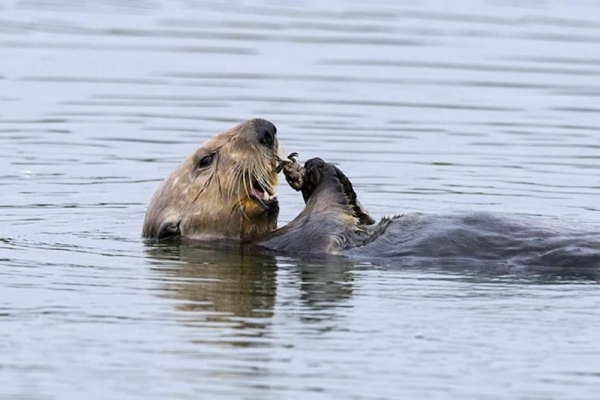California sea otters were nearly hunted to extinction in the 19th century, with only a small number surviving along the central coast.
California sea otters were nearly hunted to extinction in the 19th century, with only a small number surviving along the central coast. As otters rebounded, a natural experiment unfolded. Scientists could study how otters safeguard California’s underwater kelp forests and marshland, even in the face of worsening climate change.
Over the course of the 20th century, severe heat devastated kelp forests in both northern and southern California. Between 1910 and 2016, canopy cover in these regions dropped by more than half, according to a new study published in PLOS Climate. But along the central coast, as sea otters multiplied, canopy grew by 56 percent. That’s because otters eat sea urchins, which, left unchecked, decimate kelp forests.
“Our study showed that kelp forests are more extensive and resilient to climate change where sea otters have reoccupied the California coastline during the last century,” said lead author Teri Nicholson, a biologist at the Monterey Bay Aquarium.
Read more at: Yale Environment 360
A sea otter eating a crab in Monterey Bay, California. (Photo Credit: Killiii Yuyan)




